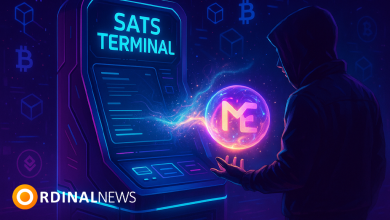Rainforest Foundation US NGO plans strategic Bitcoin reserve

The Rainforest Foundation US “Treasury for the Trees” initiative aims to raise 100 BTC for a strategic Bitcoin reserve. RFUS executive director Suzanne Pelletier explains why.
Strategic Bitcoin reserves and Bitcoin-based treasuries are all the rage these days as 14 US states, the US government, El Salvador, other countries and a handful of banks and corporations have publicly announced or proposed plans to launch reserves.
While the reasons for creating Bitcoin-backed treasuries are many, the Rainforest Foundation US is createing one with the goal of tripling its operating budget and its rainforest conservation efforts over the next 10 years.
On Episode 54 of The Agenda podcast, hosts Ray Salmond and Jonathan DeYoung spoke to Rainforest Foundation US executive director Suzanne Pelletier to learn more about its goal of raising 100 Bitcoin, or around $10 million, as well as to explore the NGO’s 37-year history of helping Indigenous peoples in South America protect their ancestral land rights in the rainforests of Peru, Brazil and Guyana.
The perfect moment for a strategic Bitcoin treasury
When asked about the reasons for forming a Bitcoin treasury, called “Treasury for the Trees,” Pelletier said Rainforest Foundation US wants to raise the equivalent of its $10 million 2024 annual budget, as the NGO had realized that the “cash in our bank account is just losing value.”
“With inflation and dollar debasement, the money that people have given us that we’re holding in a reserve is losing value. We were inspired by looking at companies, particularly, of course, MicroStrategy and other for-profit companies, that are looking at adding Bitcoin to their treasury. So, we wanted to take that model to the nonprofit sector.”
Regarding the timing of the strategic Bitcoin reserve launch, Pelletier said, “We just think with market cycles with Bitcoin, it makes sense to do it now.”
“At this point in the halving cycle, it looks like there could be potential for a lot of appreciation this year. So we wanted to launch at this point. Regulatory changes and obviously the price action — we just saw this as an important moment to launch as soon as possible.”
Using Bitcoin and crypto for social impact
Most of the proposed Bitcoin strategic reserves have stipulations that the acquired BTC cannot be spent for a specific number of years, or in the case of the US, redemption can only be used to pay down the national debt. The Rainforest Foundation US Bitcoin treasury differs in that the collected funds will be used for the organization’s various initiatives across South America.
Pelletier said the foundation’s “territorial monitoring work at the community level in Peru” costs “about $2 an acre per year,” equivalent to 0.00001021 BTC at the time of writing.
“So with a 1 Bitcoin donation, you could help support local communities protecting 50,000 acres for one year.”
Additional information from the NGO’s website details how 0.0015 BTC ($147) provides satellite monitoring for 50 acres of rainforest to track potential deforestation and how 0.0154 BTC ($1,500) provides a stipend for an Indigenous forest patroller for a year.
Pelletier said that the Rainforest Foundation US differs from other NGOs and charities that have a tendency to be more land conservation-focused than people-focused by “supporting Indigenous peoples on the frontlines of rainforest protection.”
By standing “in solidarity with those who call the rainforest home,” Rainforest Foundation US uses funds to support international and local Indigenous teams by strengthening organizations and providing legal, technical and advocacy support for Indigenous peoples’ ancestral land rights and environmental conservation.
When asked about the degree of agency and participation that Indigenous communities have in the program management and decision-making process of various Rainforest Foundation US initiatives, Pelletier said:
“All of our work is done in partnership with Indigenous peoples and the Indigenous partners that we work with. A lot of times what we do is co-create projects that then we will take as an organization and try to get funding for. We don’t come in with an agenda. We always work in partnership with, not just consultation but parthershp with communities.”
To hear more from Pelletier’s conversation with The Agenda — including the nitty gritty details on why Rainforest Foundation US is fundraising for a Bitcoin treasury — listen to the full episode on Apple Podcasts or Spotify.




